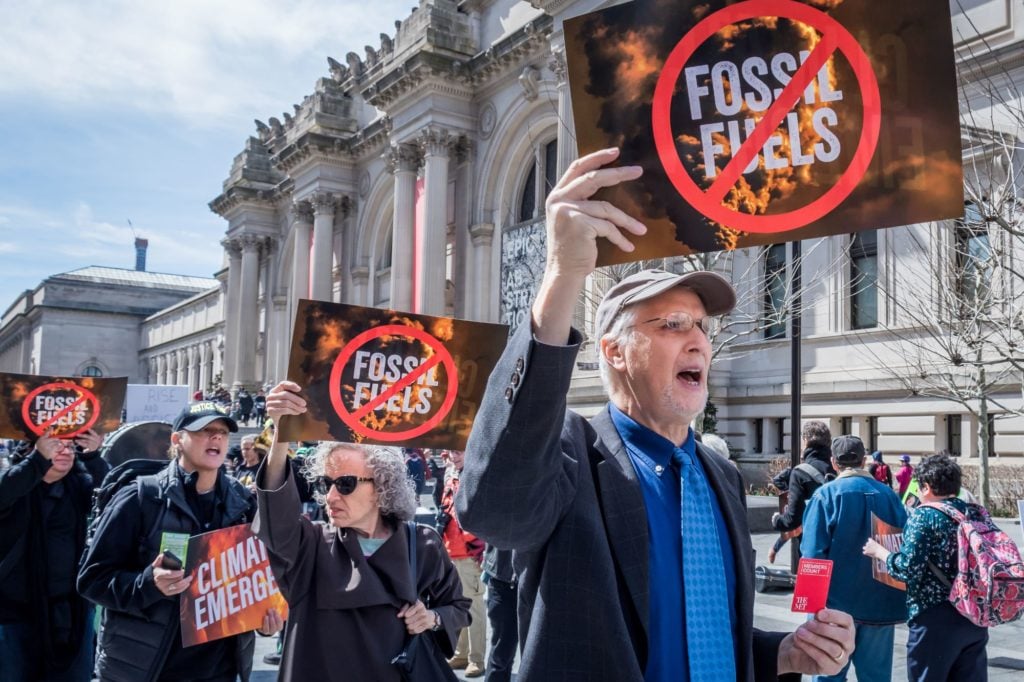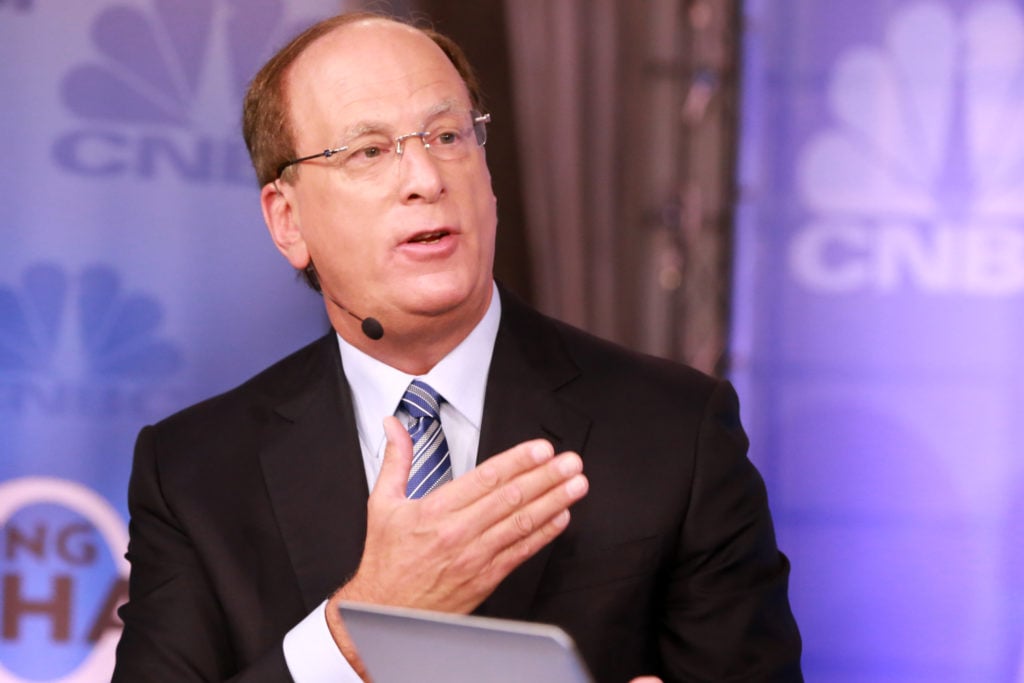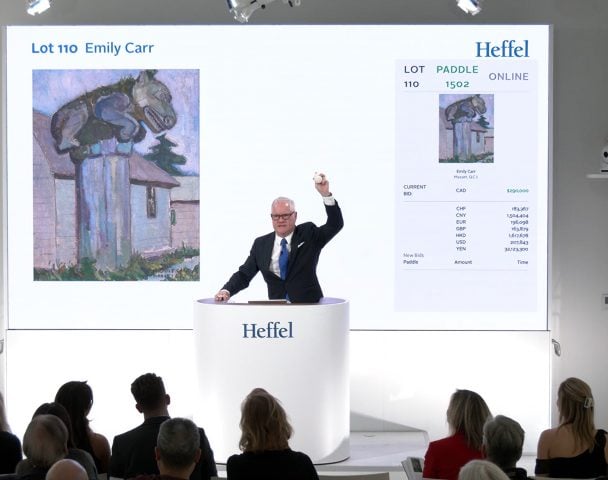Every Monday morning, Artnet News brings you The Gray Market. The column decodes important stories from the previous week—and offers unparalleled insight into the inner workings of the art industry in the process.
This week, throwing a green filter onto the old maxim that sharing is caring…
EARTH GANG
Last week, a flurry of moves in business and US policy hoisted climate justice into the front row of public consciousness and corporate strategy. In the art market, a key piece of commentary also reinforced the larger lesson that transparency has become one of the most powerful, least utilized tools for greening any trade, including our own. But even with a clear model in place for how everyone can get loud and proud about climate action fast, the question becomes whether the art economy will recognize the urgency and opportunity of the moment.
Let’s quickly catch up on the steps the wider world took toward environmental justice first.
On Wednesday, president Joe Biden signed a slew of executive actions that “elevate climate change across every level of the federal government,” according to the New York Times. The directives include freezing leases for fossil-fuel extraction on federal land and water; requiring government agencies to fully transition to electric vehicles; and designating climate change as one of the top priorities that must guide all foreign policy and national security strategies implemented under his administration.
A day later, General Motors, the US’s largest automaker, announced it would produce only zero-emissions vehicles by 2035. The bombshell decision comprises part of an even grander plan to make every aspect of the nearly $73 billion GM Corporation carbon-neutral by 2040.
Yet arguably the most influential move of the week predated those taken by both Biden and GM. On Tuesday, a year after signaling his world-shaping fund would reorient its strategy around the conviction that “climate risk is investment risk,” Blackrock chief executive (and controversial MoMA trustee) Larry Fink used his annual letter to investors to double down on his hard pivot to companies with an ESG (environmental, social, and governance) focus.
The new missive advanced the strategy in part by urging all companies—public and private alike—“to disclose a plan for how their business model will be compatible with a net-zero economy,” including going carbon-neutral by 2050.
Crucially, Fink cast the shadow of dire financial consequences over his call for action. As Gillian Tett summarized in the Financial Times, he made clear that Blackrock would now begin working to “report the climate impact of all [its] funds, offer customized green index products, build climate-risk tracking metrics, launch green funds, and use shareholder votes to promote change” at companies that stay weak and quiet on environmental action. Since Blackrock currently wields almost $9 trillion in investable assets, that warning shot to CEOs around the globe should sound like it came from an anti-aircraft gun.
The end result of all this green-eyed activity is impossible to miss: from the White House to Wall Street, and from assembly lines to trading terminals, the world’s largest economy has suddenly gotten religion on climate change. And that means it is (past) time for even the crassest members of the art industry to do the same.

Activists outside the Metropolitan Museum of Art call for urgent action to end the climate emergency on March 24, 2019. Photo by Erik McGregor, Pacific Press/LightRocket via Getty Images.
GREENBACKS FOR GREEN ACTION
I don’t know or particularly care what’s in the hearts of the politicians, executives, and stock jockeys above, but they’ve all made clear their conversion to eco-consciousness happened in no small part at the Church of the Almighty Dollar. Still, I think this is the rare case where greed and good can skip hand-in-hand into the chapel.
Auto-industry analysts have noted that, while electric vehicles still make up only about three percent of new vehicle sales globally, they also constitute the most propulsive growth sector in car manufacturing. As the Times pointed out, the text of Biden’s executive order uses the word “jobs” 15 times. And in finance, Blackrock estimated that 81 percent of ESG index funds saw higher returns in 2020 than indices that ignored sustainability.
However, Blackrock’s estimate is somewhat muddy thanks to a problem familiar to anyone in the art world. Tett of FT relayed that, as recently as 2018, the results of ESG investing were “hard to see… because the sector (like any new corner of finance) was opaque and fragmented.” Fink’s letter suggests there’s still ample room for improvement on this front.
Yet with his croon for corporations to bear all backed by the seductive sounds of Blackrock’s jingling trillions, companies across economic sectors are likely to start pulling out their climate plans quick.
Just as important, the fund’s gargantuan influence on the corporate and investment level is likely to coax executives and financiers to follow his siren song on the decisions they make personally, too. After all, if there weren’t social and economic benefits to showing you value the same things as other plutocrats, every penthouse from New York to Hong Kong wouldn’t have a Basquiat screaming from its walls.
With this green wave already curling toward the art industry’s shores, it would be wise for art sellers, art-services companies, and even artists’ studios to show they’re on board with the movement. Fink’s call for businesses, especially private ones, to quantify and publicize their progress toward zero emissions makes for a surprisingly achievable start.
To prove it, we only need to look at a set of receipts that came in last week—and remember how suddenly the art industry did a 180 on in-house e-commerce last year.

Laurent Mercier. Photography by Luis Cerdeira.
SHOW AND TELL
In an Artnet News op-ed on Tuesday, Laurent Mercier of Belgian gallery Maruani Mercier charted the company’s journey to carbon neutrality—a surprisingly straightforward path that also included a substantial boost in sales. He relayed that in 2018, the gallery simultaneously reduced its carbon footprint by 36 percent and increased its turnover by more than a quarter, partly because this revved-up eco-consciousness inspired more “millennial collectors in particular” to buy from Maruani Mercier.
The gallery achieved this dual feat in just three steps: first, by reducing emissions (primarily through less business travel, more sea freight, and a switch to renewable energy providers); second, by estimating its remaining emissions using free online carbon calculators (like those offered by CO2logic or Carbonfund.org); and last, by paying to offset the remaining emissions via a climate-justice cause (such as buying efficient cookstoves for residents of low-income countries or, as Frieze and Gallery Climate Coalition cofounder Matthew Slotover covered in a separate op-ed, contributing to climate-defense legal funds).
My summary no doubt underplays Maruani Mercier’s efforts. Yet Mercier’s how-to guide cements that, as with so many other initiatives that could transform the art economy, the most vital factor in taking the gallery carbon-neutral was the will to do it at all.
Similarly, I think a ton of mistakes were made during the great online viewing room boom of 2020, but it proved beyond a shadow of a doubt that the industry’s for-profit side can change at lightning speed when it feels it must.
If dealers around the world could, in a matter of weeks, reverse their longstanding resistance to consistently programming their own online sales—including openly publicizing the prices and availability of thousands of works to anyone with an email address and/or internet connection—there is no reason they couldn’t quantify and broadcast their plans to reach zero emissions in a similar time frame. (Auction houses and major art-services companies would probably need more lead time, but c’mon, we’re not sequencing the first human genome here…)
That said, “broadcast” is the key word. Just as Fink is imploring companies in the wider economy, any art business that takes these climate-conscious steps should bellow it from the rooftops with press releases, op-eds, social-media content, a dedicated webpage charting emissions and the steps taken to reduce and offset them, and more.
From a business standpoint, being bashful about publicizing a serious eco-commitment is as wasteful as not making one in the first place.
I can’t guarantee these moves will pay off immediately. But the events of the past week prove that even the most profit-hungry actors on our beleaguered planet are making dollars-and-cents decisions with climate change at the forefront of their minds. Whether art businesses want to heal the earth, save future generations, or just make some cash money, they must recognize which way the wind turbines are blowing—and act accordingly.
[Artnet News]
That’s all for this week. ‘Til next time, remember: contrary to what a color theorist would tell you, green goes with everything.








